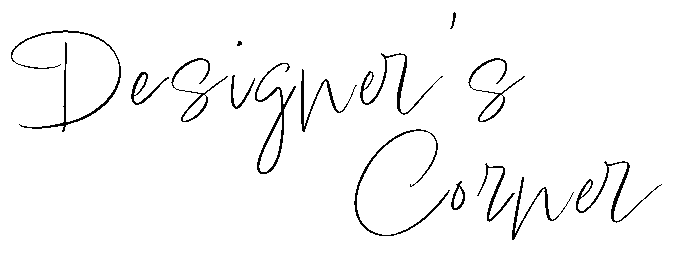
Launch Your Own Business
Steps to Transforming your Interior Design Passion into a Business
Venturing into the thrilling adventure of launching your own interior design business? Starting an interior business is more than just creating the perfect room. It requires creativity, strategic planning and skillfully blending both business and art. In this guide, we’ll walk you through the essential 10 steps to transform your passion for design into a thriving entrepreneurial venture. Consider this your blueprint for navigating and starting your very own interior design business.
1. Education & NCIDQ Certification:
Obtaining an interior design degree and securing NCIDQ certification propels you into the esteemed realm of a “Interior Designer.” This title resonates with a declaration of having mastered the intricacies of space planning, ensuring the safety and welfare of clients and occupants without causing design chaos. On the flip side, if you’re pursuing interior design without the degree and certification, you’re more like an interior enthusiast, armed with a keen eye for aesthetics and a bold disregard for the rules.
2. State Licensing Requirements
Research the licensing requirements in your state. Some regulate the use of the title “Interior Designer, “ and licensure may be required to practice. In states where licensing is mandatory, having an NCIDQ certification may be a prerequisite. In others such as California it is the IDEX exam that is a requirement. You will need to register your license and wait for the approval from your state’s Board of Architecture and Registered Interior Designers. Once you are approved, don’t forget to keep up on your continuing education requirements!!
3. Registering your Business
Apply for a business license with the Secretary of State (SOS) in your state. This legal step ensures that your interior design business is recognized and authorized to operate. Each state will have a fee for filing your business with the state. It will need to be renewed biannually or annually. Make sure to keep track of the renewal dates and promptly submit the necessary paperwork to maintain your business’s active status.
4. Sales Tax License (State & District)
Each state is slightly different but you will need to apply for both your state and district sales tax licenses. This is crucial if you plan to sell tangible goods. Check with your local tax authority and obtain the necessary licenses if applicable. Please note: You pay sales tax for the district you are delivering the items, not the district your business is located in. You can file 0 until your first sale. All furniture manufacturers and vendors will request the state document before giving you any wholesale pricing. I recommend applying for it as soon as your business has been registered with the state.
Entrepreneurship is not merely about having a perfect plan; it’s about having the courage to jump headfirst into the unknown.
5. Create a Business Plan
Developing a comprehensive business plan is similar to strapping on a parachute before taking the entrepreneurial leap. It provides a structured roadmap, helping you navigate the unpredictable landscape of business with a clearer vision. By outlining your business goals, identifying your target market, defining services, crafting marketing strategies, and projecting finances, you’re essentially creating a safety net. Yet, entrepreneurship is not merely about having a perfect plan; it’s about having the courage to jump headfirst into the unknown, embracing trial and error as your guide. Your business plan is your initial parachute, but the real thrill lies in the willingness to take calculated risks, learn from mistakes, and adapt along the exhilarating journey of building a successful interior design business.
6. Build a Portfolio
Creating a portfolio showcasing your previous work is a crucial step in establishing your interior design business. However, for those who have been working for someone else or just graduating school, this task can pose unique challenges. When you’ve been part of a team or worked under another designer, gaining access to a diverse range of projects can be tricky. Additionally, legalities come into play, especially if you are unable to use images from your former employer’s projects without explicit permission. Many employers, and rightfully so, may have restrictions on the use of project images for personal promotion. This also applies to photographs taken by professional photographers engaged by your former employer.
I’ve come across interior designers who craft concise, one-page websites featuring their school projects and professionally rendered computer designs. During client interviews, they effectively leverage their prior work in a manner akin to a detailed resume. It’s a nuanced balance, but with a touch of creativity and effective communication, constructing a portfolio that highlights your expertise while respecting legal considerations is entirely feasible.
7. Network, Marketing, and ASID
Participate in industry events, become an active member of professional organizations, and connect with fellow designers and potential clients to weave a rich tapestry of professional relationships. Cultivate your online presence by crafting a dynamic website and engaging on social media platforms. Leverage digital marketing strategies to cast a wider net and draw in a broader audience. Reflecting on personal experiences, while organizations like ASID may not have directly ushered in new clients, they can unfold unexpected treasures. In my case, ASID introduced me to a wonderful circle of friends. We now regularly gather for delightful happy hours, where creative ideas are exchanged.
Although I personally refrain from reposting images from other designers online, I’ve observed that some designers gain traction by presenting these images as indicative of their own style. However, there’s a certain discomfort that lingers, questioning the authenticity of such an approach.
8. Contracts and Legal Considerations
Crafting transparent and thorough contracts for your clients is a pivotal step in establishing a successful interior design business. These contracts should meticulously detail the scope of work, payment terms, and any other pertinent conditions to avoid any ambiguity or misunderstandings down the road. To safeguard your business and ensure legal compliance, it’s imperative to consult with a legal professional who can provide insights tailored to your specific location and circumstances. An additional advantage, especially for members of the American Society of Interior Designers (ASID), is access to their industry-standard contract templates. Leveraging these templates not only streamlines the contract creation process but also ensures alignment with best practices within the design industry.
9. Insurance
Securing the right insurance coverage for your interior design business is akin to fortifying your creative fortress against unexpected challenges. While liability insurance is a crucial foundation, delving deeper into the realm of protection often involves distinguishing between errors and omissions (E&O) insurance and general liability insurance.
Professional liability insurance, often referred to as errors and omissions insurance, serves as a specialized safeguard tailored to the intricacies of the design industry. It offers protection against claims arising from professional oversights, mistakes, or negligence in your design work. This coverage becomes especially pertinent in situations where a client alleges that your recommendations or decisions have caused financial loss or other damages.
On the other hand, general liability insurance is more expansive, covering a broader spectrum of risks. It typically safeguards your business against third-party claims for bodily injury, property damage, or personal injury occurring within your business premises or as a result of your operations. This coverage extends beyond the specific nuances of design work and encompasses a wider array of potential liabilities.
10. Federal EIN and Banking
Don’t overlook the importance of obtaining your Federal EIN number to facilitate the financial aspects of your interior design business. This number is crucial for opening a dedicated business bank account, allowing you to cash or deposit checks seamlessly. Furthermore, acquiring an EIN is a prerequisite for obtaining a business credit card. In the digital age, it’s wise to explore modern payment solutions such as Venmo or credit card processing apps. Embracing these options not only accelerates payment processing but also caters to clients who prefer online transactions. With many clients moving away from traditional checks, embracing digital payment methods can often result in quicker and more efficient payment, often within a week of completing a project.
XOXO,



 Checklist for Financial Practices
Checklist for Financial Practices